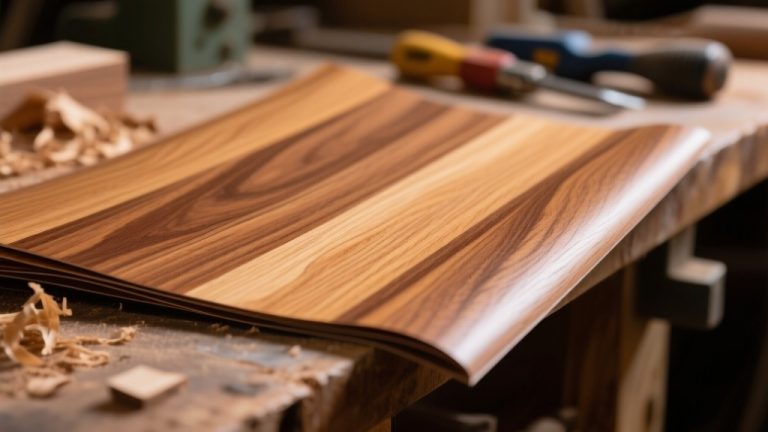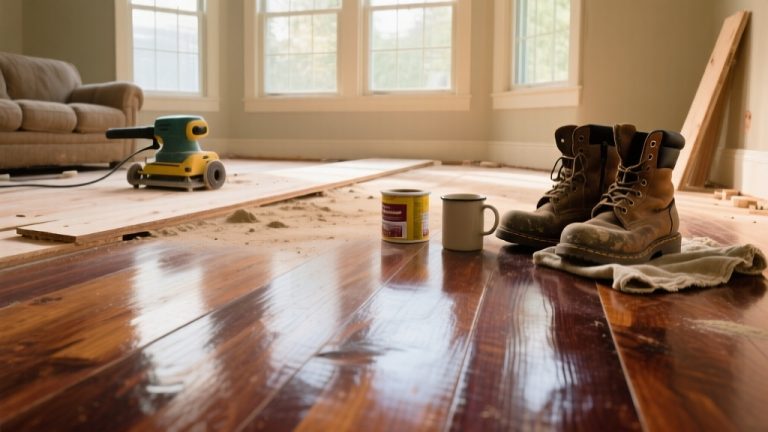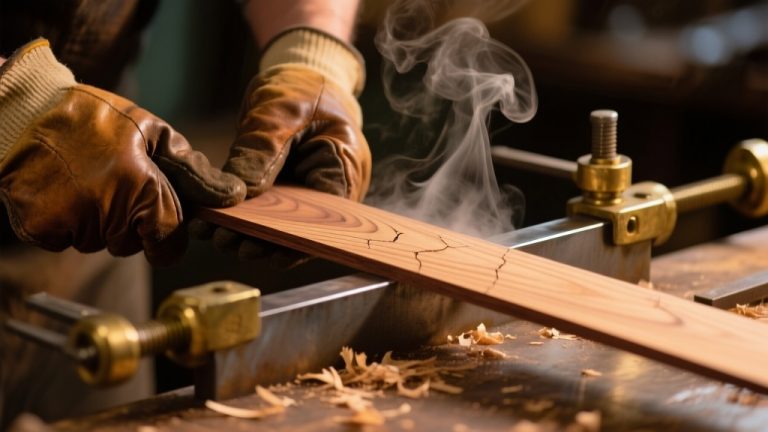How To Clean Human Urine From Hardwood Floors: 10 Steps to Take
Hardwood floors are a popular choice for many homeowners due to their durability, aesthetic appeal, and ease of maintenance. But accidents can happen, and one of the most common issues you may face is cleaning human urine from hardwood floors.
If you spill urine on your hardwood floor, acting quickly is essential. First, use a cloth to blot and rinse the area, removing excess liquid. Next, select a cleaning solution appropriate for your floor’s finishing, and rinse the area again before drying it with a heavy towel or wet vac.
For foul smells, try sprinkling baking soda on the area overnight before cleaning it up. If you like, enhance the scent of your hardwood with a few drops of essential oil.
Here’s a guide that aims to give you a step-by-step guide on effectively cleaning human urine from hardwood floors. Also, we will discuss whether hydrogen peroxide or steam cleaners are adequate and whether human urine stains hardwood floors.
Steps on How Do You Clean Human Urine from Hardwood Floors
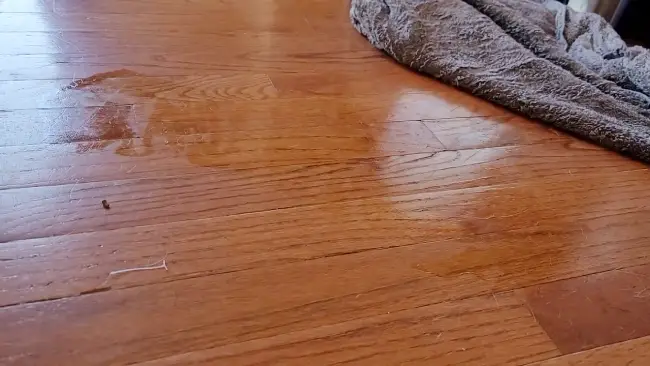
The smell of human urine is unpleasant and leaves residue on wood surfaces. That is why it is important to remove it as soon as possible. Here are the necessary steps:
- Step 01: Act quickly
- Step 02: Wear protective gloves
- Step 03: Blot up the urine
- Step 04: Rinse the area
- Step 05: Prepare a cleaning solution
- Step 06: Clean the floor
- Step 07: Rinse again
- Step 08: Dry the floor
- Step 09: Odor removal
- Step 10: Finishing touches
Step 01: Act Quickly
When dealing with fresh human urine on wooden surfaces, acting quickly to prevent stains and odors from forming is crucial. Urine can easily penetrate hardwood floors’ porous surfaces, making removing the damage difficult.
Plus, the longer you wait to clean up the mess, the more the urine will seep into the wood and cause damage.
Step 02: Wear Protective Gloves
Human urine can carry harmful bacteria and viruses that can cause serious health problems if left unattended. Thus, wearing protective gloves can prevent the spread of these microorganisms and protect yourself from potential infection.
Here are some useful tips to keep in mind when wearing gloves:
- Choose gloves made of nitrile, latex, or vinyl materials, as they provide adequate protection against bodily fluids.
- Ensure the gloves fit snugly around your hands to avoid any leakage or spillage of urine.
- Avoid touching your face or any other body part while wearing gloves, as this can lead to cross-contamination.
- Dispose of the gloves immediately after use in a designated waste bin to prevent the spread of bacteria or germs.
- Wash your hands thoroughly with warm water and soap after removing the gloves to ensure complete hygiene.
Step 03: Blot up The Urine
Use absorbent materials like paper towels, old rags, or a clean cloth to blot up as much liquid as possible. Firmly press down on the affected area, but avoid rubbing to prevent the human urine from spreading further.
Once you’ve soaked up the urine, dispose of the absorbent materials in a sealed plastic bag to prevent any odor. Make sure you clean up your hardwood floors quickly and efficiently.
Step 04: Rinse the Area
The affected area should be rinsed with a damp cloth or sponge to ensure thorough cleaning and removal of any urine residue. This step dilutes and washes away the urine residue, leaving your hardwood floors with a fresh and clean aroma.
You should avoid using excessive water, as it can cause damage to the wood. When proper rinsing is not carried out, the smell of human urine can persist and inhibit the comfort of your indoors.
Also, urine residue can attract pests and other insects, making your living conditions unhygienic and potentially harmful to your health.
Step 05: Prepare a Cleaning Solution
One option is to mix a mild detergent with warm water, which can help break down any stains and grime on the floor. This solution should be applied to the affected area using a soft cloth or mop, ensuring that the area is thoroughly saturated.
Alternatively, a specialized hardwood floor cleaner is recommended for a more targeted approach. Often, these cleaners contain ingredients that protect hardwood floors from future damage and remove human urine stains and odors.
Another natural alternative is a vinegar solution consisting of one part white vinegar to ten parts water. This solution is effective at neutralizing odors and killing bacteria, and it can be safely used on most hardwood floors.
Step 06: Clean the Floor
Dip a soft cloth or sponge into the cleaning solution and wring it out well. Once the cloth or sponge has been adequately prepared, gently scrub the human urine stain with it.
Excessive force can lead to scratches or damage to the hardwood floor’s finish. It is also crucial to work in small sections and rinse the cloth or sponge between each section.
This ensures that the cleaning solution is effective and that the urine is completely removed from the surface of the hardwood floor.
Step 07: Rinse Again
As soon as the affected area has been scrubbed with the cleaning solution, rinse it thoroughly with a clean, damp cloth to ensure no residue remains. This step is crucial in preventing any damage to the hardwood floor and the health of those living in the house.
Any residue left behind could cause the floor to become dull or discolored over time. Also, if the human urine residue isn’t properly removed, it could cause health issues, especially if pets or kids are around.
Step 08: Dry the Floor
After rinsing the hardwood floor with clean water, it’s crucial to dry the affected area with a clean cloth or towel. This step is essential in preventing potential damage and maintaining the quality of the surface.
Leaving any moisture behind can cause damage to the hardwood floor, such as warping or discoloration. To avoid damage, pay particular attention to the corners and edges of the affected area when wiping it down with human urine because these areas tend to retain moisture.
A fan or open windows can be used to speed up the drying process. Ensure that you remove all excess water and leave no moisture behind. Remember, a dry surface is a happy surface.
Step 09: Odor Removal
For eliminating unpleasant odors from surfaces, enzymatic cleaners are the way to go. These specially-designed cleaners break down organic compounds in human urine that cause odors, leaving harmless substances behind.
Enzymatic cleaners are especially effective for removing urine odors from even the deepest parts of hardwood floors. And enzymatic cleaners are safe for all types of wood and won’t cause discoloration or damage.
They’re an environmentally-friendly choice since they don’t release harmful chemicals into the air or water supply.
Step 10: Finishing Touches
Now that the unpleasant odor has dissipated, it’s time to add some finishing touches to your hardwood floor. This means either polishing it with a liquid solution or waxing it with a solid substance.
Both options offer a protective layer that prevents scratches, stains, and other types of damage. Let it dry for the recommended time before walking on it.
Can you use hydrogen peroxide to clean human urine from hardwood floors?

Hydrogen peroxide is an excellent cleaning solution for removing human urine from hardwood floors. It breaks down the enzymes that cause stains and odor, which can discolor, stain, and warp wood if left for too long.
Mix equal parts water and 3% hydrogen peroxide to make a solution. Let the solution sit for a few minutes on the spilled urine area. Gently scrub with a damp mop or towel without saturating the wood.
Rinse with clean water and dry thoroughly, making sure not to use too much water to avoid damaging the floors. Hydrogen peroxide is a safe and effective way to clean hardwood floors and restore them to their original state.
Can you use a steam cleaner to clean urine from hardwood floors?
Due to the high levels of moisture and heat generated by a steam cleaner, cleaning human urine from hardwood floors can damage the material. Hardwood floors are particularly at risk of warping and cracking due to heat and moisture.
The steam can also compromise the finish of the wood, resulting in discoloration and other forms of damage. Avoiding such damage by using vinegar and water solution instead is advisable.
Does human urine stain hardwood floors?
The ammonia within human urine poses a potential problem for the appearance of hardwood floors, as it can cause unsightly staining. When urine comes into contact with hardwood floors, the ammonia within it breaks down the natural color of the hardwood and causes it to discolor.
The longer the human pee remains on the wood, the deeper and more noticeable the stain becomes. And, if the urine is not cleaned up promptly, it can seep into the wood and create a more permanent stain that is much harder to remove.
Keep in mind that not all hardwood floors are created equal, and some may be more susceptible to staining from urine than others. But, regardless of the type of wood, it is essential to clean up any urine immediately to prevent staining and damage to the hardwood.
Protect Your Hardwood Floors: Quick Action Destroying Urine Stains
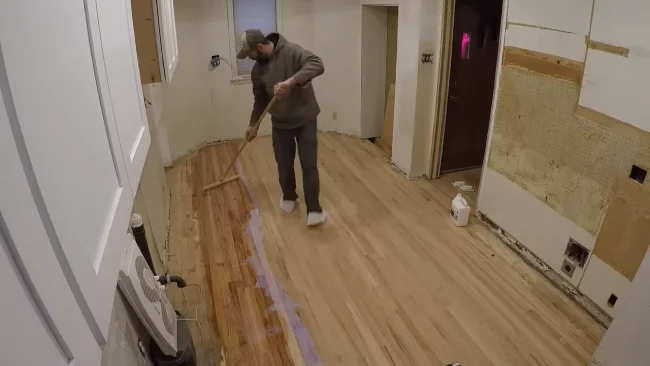
Cleaning human urine from hardwood floors requires immediate action to prevent permanent damage. Delayed cleaning can lead to discoloration and significant harm to the wood, according to a study by the University of Maryland.
To tackle this issue, start by blotting up the urine with a cloth and then using water and vinegar to clean the area.
Be cautious when using hydrogen peroxide, ensuring proper dilution to avoid damaging the hardwood. On the other hand, avoid using steam cleaners, which can cause the urine to set in the wood and cause irreparable damage.
Remember, acting quickly is critical to preserving the appearance and integrity of your hardwood floors.


